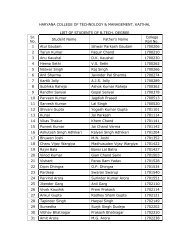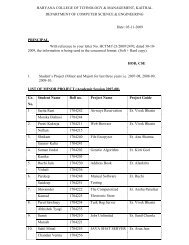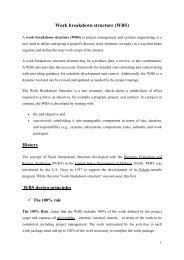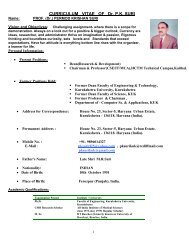Create successful ePaper yourself
Turn your PDF publications into a flip-book with our unique Google optimized e-Paper software.
LECTURE NOTES OF ADVANCED DATA STRUCTURE (MT-CSE 110)<br />
(remember that array indices always begin by zero).<br />
Multidimensional arrays are not limited to two indices (i.e., two dimensions).<br />
They can contain as many indices as needed. But be careful! The amount of<br />
memory needed for an array rapidly increases with each dimension.<br />
For example:<br />
char century [100][365][24][60][60];<br />
declares an array with a char element for each second in a century, that is more<br />
than 3 billion chars. So this declaration would consume more than 3 gigabytes<br />
of memory!<br />
Address Calculations in One‐dimensional arrays<br />
The one dimensional arrays are also known as Single dimension array and is a<br />
type of Linear Array. In the one dimension array the data type is followed by the<br />
variable name which is further followed by the single subscript i.e. the array can<br />
be represented in the row or column wise. It contains a single subscript that is<br />
why it is known as one dimensional array because one subscript can either<br />
represent a row or a column.<br />
The address of a particular element in a one‐dimensional array is given by the<br />
relation:<br />
Address of element a[k] = B+W*K<br />
Where B is the base address of the array, W is the size of each element of array<br />
, and k is the number of required element in the array (index of element) which<br />
should be a integer quantity. For example:<br />
Let the base address of the first element of the array is 2000( i. e, base address B<br />
is =2000), and each element of the array occupies four bytes in the memory,<br />
then address of fifth element of a one dimensional array a[10] will be given as:<br />
Address of element a [5] =2000+4*5=2000+20=2020<br />
Prepared By :<br />
Er. Harvinder Singh<br />
Assist Prof., CSE, H.C.T.M (Kaithal) Page ‐ 35 ‐







